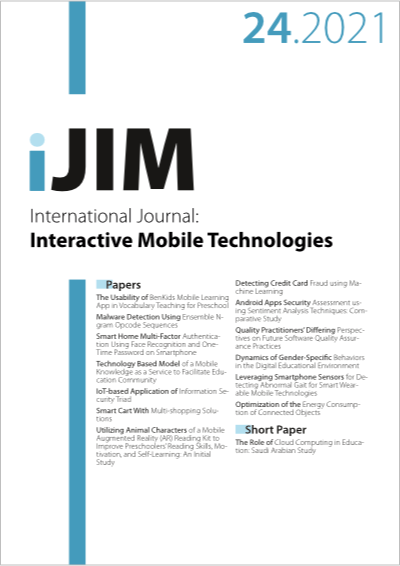Optimization of the Energy Consumption of Connected Objects
DOI:
https://doi.org/10.3991/ijim.v15i24.26985Keywords:
IOT, Cloud Computing, RFID, WSN.Abstract
The IoT is a growing new approach that has been defined as a global network of devices and machines capable of reliably communicating with each other without human intervention. It is one of the essential technologies in any field, such as medicine and attracts great attention in the future. It is applied in several areas that have achieved success. However, the power and the addition of connected objects to technology is based on the fact that its objects can establish several tasks: communicate, analyze, process and manage data in a parallel manner, which is very difficult in terms of energy consumption. Therefore, the problems related to consumption slow down considerably the evolution and the fast deployment of this high technology.
Therefore, it is necessary to create a new lightweight and robust mechanism, which ensures the minimization of the consumption of the objects and makes these objects efficient and less costly while being adapted to the capacities of objects and technologies.
That is why our paper aims to address this significant problem and present the role of energy consumption, which is essential in deploying successful IoT products and services and presenting the IoT categories for applications. First, we propose a method that minimizes energy consumption and meets our need through three essential steps: firstly, to study the existing methods to minimize energy consumption. Next, based on these methods, we create a new concept using the data flows. Finally, we implement our solution in an intelligent parking lot to carry out our approach and describe our design steps and conclude with the result of our study and make an interpretation that summarizes our work.
Downloads
Published
How to Cite
Issue
Section
License
Copyright (c) 2021 Mohammed Moutaib, Tarik AHAJJAM, Mohammed FATTAH, Youssef FARHAOUI, Badraddine AGHOUTANE, Moulhime EL BEKKALI

This work is licensed under a Creative Commons Attribution 4.0 International License.


